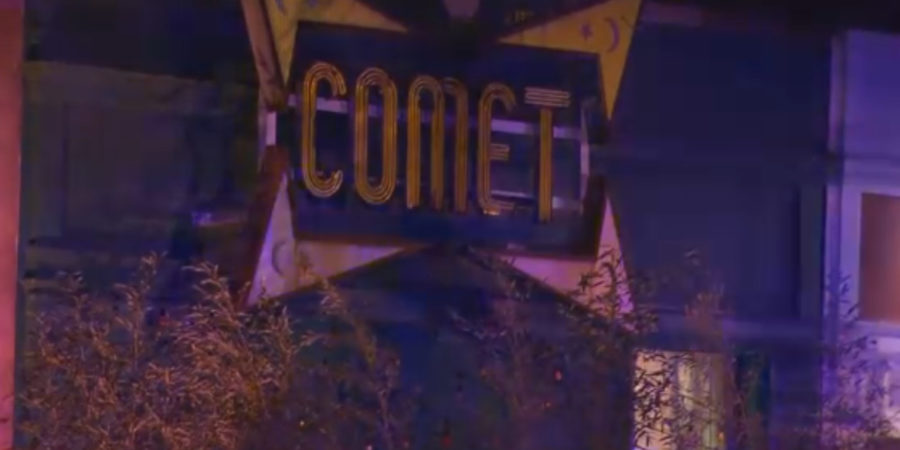Stamping out fake news is not a false hope
A man read a false news rumor that sex slaves were being held inside Comet Ping Pong. He entered the pizza shop with a gun.
January 12, 2018
ATTENTION!!! hillary Clinton said to be running dc from secret bunker in ohio!!!
I truly hope that you did not believe that. It is, obviously, fake news. But what gave it away? Was it the excessive exclamation points? Perhaps it was the irregular capitalization, the forceful word “attention” or the complete ludicrousness of the idea. Whatever it was, something (hopefully) told you that you were reading fake news. But what if I corrected my capitalization and punctuation? Would you have fallen for it then?
Hillary Clinton said to be running D.C. from secret bunker in Ohio.
Is this fake headline more believable now?
False stories (“fake news”) have been forced into the spotlight, mostly due to social media. First, I should clarify that “fake news” is not an unfavorable report from a major news network such as CNN or Wall Street Journal, which may come as a “yuge” surprise to President Trump. “Fake news” should refer to stories that are factually incorrect.
Trump’s eager cries to dismiss adverse information as leftist fake news is one reason why it is imperative that schools add lessons on detecting unreliable news. Students must know the difference between the incorrect Trump version of “fake news” and the term’s true meaning.
Fake news can spread nearly instantaneously, especially with the aid of social media. People can easily share false stories simply by tapping a button, however, many people are unable to distinguish between true and unreliable news. Research by Stanford’s Graduate School of Education found that more than 80 percent of middle schoolers that they evaluated believed that a “sponsored content” article was actually a news story.
People who are not educated in spotting false stories may be more inclined to pass along fake news to gullible friends and followers. Popular fake news stories may have severe implications.
In an incident that earned the name “Pizzagate,” a fake story that circulated via Twitter claimed that Hillary Clinton and John Podesta, her campaign chief at the time, were running a child sex ring in a pizza shop in Washington D.C.
As preposterous and outrageous as the story was, it caused a man to enter the D.C. pizza shop, Comet Ping Pong, with a gun, attempting to save the alleged sex slaves. No one was injured, but it demonstrated the necessity of reading social media news with a wary eye.
It is crucial that schools add a mandatory unit that educates students about discriminating between real and fake news, especially on social media.
Teachers must educate students about reliable sources, identifying possible fallacies and reading articles carefully. Some people read the news while only partially paying attention. They put down an article only part way through, losing interest before reading an author’s clarification in a later paragraph or footnote.
In fact, 87.6 percent of students report disregarding footnotes as “dumb” and “dismissable” information.¹
Unfortunately, social media cannot eliminate fake news on their own because the line between satire and fake news can be blurred. For example, “The Onion” is a satirical news site that publishes fake headlines to make a point about society. If social media vows to eliminate fake news, would they outlaw satire?²
One of the only ways that fake news can be cut down is to educate the younger generation. While all teachers should be encouraged to at least mention the topic in class, the brunt of the fake news education would most likely fall on English teachers.
English teacher Vicki Maslo and other 11 Honors teachers taught a unit on detecting fake news. Maslo showed students articles and tweets that demonstrated officials spreading incorrect information.
“I think that some kids were generally shocked that, truly, people of such power would spread such incorrect information purposefully or dangerously,” Maslo said.
Maslo said that she believes that the advent of social media has changed news tremendously. She said that she feels that social media can expose injustices, but can also spread falsehoods.
“[Social media] can be such a dangerous tool in the wrong hands,” Maslo said.
The English 11 Honors unit on fake news was a step in the right direction, but English teachers for all grades and levels must include media education as a mandatory part of their class.
Although teachers are always preparing students for the endless deluge of tests, perhaps they can stand to give up a unit of poetry or classical literature to teach students to become responsible news consumers. Social media is on the rise. This problem will not go away without action. Teachers everywhere must work to recognize and reverse the very real consequences of fake news.
¹This statistic is false! The six people who bothered to scroll down and read this footnote will know that. See my point?
²Just checking to make sure you’re still here.

